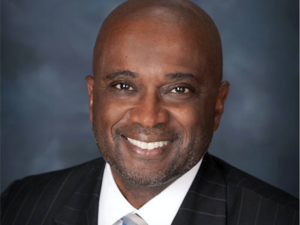Editor's note: This is a guest post by Kristin Gunther, a vice president at Washington, D.C. venture capital firm Revolution.
As a first-timer at CES and with just two days to cover the expansive exhibit space, I decided to focus on one area of consumer technology. Resolutions for the new year fresh in my mind, I chose health and wellness. Judging by the floor space and number of events dedicated to the subject, it was clear that the sector remains an exciting area of focus for entrepreneurs and consumers. Setting out to discover what’s next in fitness tech (especially given the challenges at Fitbit and many others) and to better understand the opportunities for venture and growth investors, I observed three health tech trends:
Wearables will do more and become integrated into everyday wear
No longer just tracking steps and sleep, the latest devices can reliably measure biometrics such as heart rate, blood pressure, VO2, hydration, lactic acid levels, and even stress. Hearables (defined as “connected ear-worn devices”) were also on prominent display at CES. Driven by the development of technology that enables two separate ear buds, the “jack-less” iPhone, and continued battery improvements, hearables are growing over eight times the rate of wrist-worn devices. In addition to collecting certain biometrics more accurately than watches, hearable technology can now allow the user to choose which sounds they want to hear (“audio pass through”) and give voice commands to Alexa, no iPhone needed. I was most impressed by the features not on a fitness gadget, but on a clippable device that uses AI and motion sensors to tell its vision-impaired user about an item or read text based upon where the user points his finger. Awesome.
Along with improved function, the form of devices continues to evolve and improve. Styles now exist for those that prefer less overtly “techy” aesthetics. Most notably on display at CES were hybrid watches (watches that appear to be traditional analog but are connected), connected jewelry (the Motiv ring was a standout), and sleek biometric devices designed with fashion in mind to encourage constant wear.
"Wearables will one day give your doctor a complete set of personal health information."
Other advances have also facilitated continuous wear. Battery life and size has improved such that devices don’t need to be charged as often, making abandonment less likely as health devices become part of people’s everyday attire. Smart garments, while still in their infancy, have huge market potential (textiles/apparel is the third largest industry in most developed countries) and are actively being developed by companies small and large (Under Armour). In what struck me, the newbie, as classic CES fervor?—?I heard talk of smart garments charging themselves in the dryer and 3D printed shirts made of tech fabrics.
Investor Takeaway: With wearables that are designed for everyday use and appeal to every style, it will be hard to predict which companies can chip away at Fitbit’s market share or disrupt the market leader altogether. The real potential lies with the sensor companies driving innovation and providing parts, fabric, or other underlying technology to multiple device makers/brands.
Advances in AI, sensors, and mobile infrastructure will take wearables to the next level
Data from wearables tends to stay with the wearer, at most being sent for review to a coach or a caregiver, or posted to social media. But CES made clear that the technology exists for constant streams of health data (e.g., blood pressure collected 60 times per second rather than three times a year) from a growing number of sources (clinical, genomic, biometric, etc.) to be shared with healthcare providers in a way that is clear and actionable. 5G is helping drive mobile connectivity, and the continued evolution of machine learning is enabling the analytics required to synthesize vast amounts of data. In other words, wearables will one day give your doctor a complete set of personal health information so that wellness is a two-way conversation rather than a personal journey.
But, even personal journeys are being made more effective by the smarter advice that wearables can now impart. Devices are starting to combine multiple data streams to prescribe personal actions in ways that immediately impact behavior. If you have ever been to an Orangetheory class, you know what I mean. Companies like Under Armour appear to be leading the charge in taking it one step further, pulling together nutrition, sleep, activity, and fitness data into a user-friendly dashboard and developing shoes that can perform a “jump test,” an analysis that determines readiness to perform and prescribes specific actions based on results (e.g., “you should take it easy on your run today”).
"Why stay in the hospital for an extra two days when you can be monitored from the comfort of your own home?"
In addition, wearables will ultimately be part of a connected ecosystem that is now becoming reality. CES demonstrated that sensors will one day be omnipresent and will enable controlled environments, like your gym or home, to adapt to you (“ambient intelligence”). In this context, for example, a wearable device for the elderly becomes much more useful and, perhaps, your fridge will lock if you haven’t exercised enough that day.
Investor Takeaway: Analytics platforms are an increasingly critical element as more data is collected and stored. Companies whose software enables connectedness and/or uses artificial intelligence to synthesize data and provide deeper insights are likely here to stay.
Sickness is the next challenge to be addressed by wearables
Fitbit emerged in 2009 with the now ubiquitous sleep and step tracker. The segment evolved to meet the fitness needs of its most active users and innovated further to address wellness through biometric monitoring. CES showed that companies have begun to apply these advances in personal health monitoring to critical care settings. Why stay in the hospital for an extra two days, exposed to infection and racking up a huge bill, when you can be monitored from the comfort of your own home? Proving out the effectiveness of these concepts and gaining adoption will be the next frontier of wearables. However, the leap from wellness to sickness (primarily diagnostics and patient monitoring) is a large one, as it requires more accuracy and trust (FDA approval, secure cloud connection for HIPPA compliance, etc.). I believe we’ll see more of these companies emerge as early products pave the way for faster FDA approvals and as we transition to value based care.
Investor Takeaway: Wearables are moving deeper into care settings. Companies that are developing innovative ways to engage patients, drive adherence to clinical protocols, and ultimately improve health outcomes (e.g., by activating smart devices and/or seamlessly alerting caretakers) will be the most disruptive to healthcare.
If CES is right about the future of health tech, then we’ll all soon be sporting and following the latest advice from our wearable devices. Only time will tell if my takeaways are accurate, but I look forward to wearing the latest and finding out.




